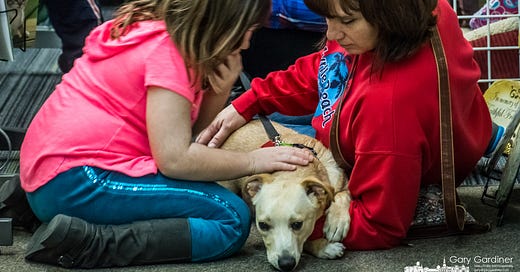Mastering The Basics
If you received a camera for Christmas, it’s about now that you’re starting to think that you’re in a toxic relationship with the thing you wanted the most. You don’t understand it. It certainly doesn’t understand you.
You’re not sure how you’re going to begin to make the kind of photographs you thought possible while researching camera capabilities and prices. You found the right price for your budget. But now, as in any relationship, things aren’t working the way you thought they would.
Today PhotoCamp Daily begins a series of explainer newsletters to help you get through the tough times, one day at a time.
Let’s begin with the basics. As told by a photojournalist.
Photojournalists play a pivotal role in storytelling by capturing powerful and evocative images that convey the essence of a story. To be a successful photojournalist it's essential to master the basics of photography, including exposure, composition, and lighting.
Photojournalists are tasked with documenting events as they unfold. Whether it's a breaking news story, a political rally, or a human-interest piece, the goal is to capture images that resonate with the viewer and provide a deeper understanding of the story.
Exposure is one of the fundamental principles of photography. It refers to the amount of light that enters the camera's sensor or film. Photojournalists need to understand exposure to capture images that are properly lit and convey the mood and atmosphere of the scene.
Key Elements of Exposure
Aperture - The aperture controls the amount of light that enters the camera through the lens. A wide aperture (small f-number) lets in more light and creates a shallow depth of field, while a narrow aperture (large f-number) allows less light and results in a deeper focus.
Shutter Speed - Shutter speed determines how long the camera's sensor is exposed to light. Faster shutter speeds freeze motion, while slower speeds capture motion blur. Photojournalists must choose the right shutter speed to capture the essence of a moment.
ISO - ISO measures the sensitivity of the camera's sensor to light. Higher ISO settings are used in low-light conditions, but they can introduce noise into the image. You must strike a balance between ISO, aperture, and shutter speed to maintain image quality.
These three elements are often referred to as the Exposure Triangle with each aspect occupying a corner. In a fixed-area triangle, the perimeters of each triangle can be adjusted to different lengths to emphasize their relationship. The ideal exposure is within this fixed-area triangle. Adjusting the three elements in unison will determine the exposure and lend elements to composition and storytelling.
Telling a Story Through Framing
Composition is the art of arranging elements within a frame to create a visually compelling image. Photojournalists use composition to ensure their photos effectively convey the story and draw the viewer’s attention.
Key Concepts of Composition
Rule of Thirds - Divide the frame into thirds both horizontally and vertically, creating a grid. Place important elements along these lines or at their intersections to create a balanced and visually pleasing composition.
Leading Lines - Use lines within the frame, such as roads or fences, to lead the viewer's eye to the main subject or focal point of the image.
Framing - Incorporate natural elements like archways or windows to frame the subject, drawing attention to it.
Foreground and Background - Consider what is in the foreground and background of the image to add depth and context to the story.
The Soul of Photography
Lighting may be the most critical element in photography. The way light interacts with a subject can dramatically affect the mood and impact of a photograph. You need to master working with available light sources and adapt to different lighting conditions.
Key Concepts
Natural Light - Understanding how natural light changes throughout the day is essential. The golden hours of sunrise and sunset offer soft, warm light ideal for many photojournalistic situations. Natural light becomes harsher and more contrasty during mid-day.
Artificial Light - Knowing how to work with artificial lighting, such as flash or ambient light, is crucial.
Shadows - Embrace shadows as they add depth, drama, and dimension to a photograph.
Color Temperature - Different light sources have varying color temperatures. You should be aware of color temperature and adjust white balance settings accordingly. Unless you’re shooting RAW where light temperature can be changed in most photo editing programs.
Mastering the basics of photography — exposure, composition, and lighting — is essential for you to effectively communicate stories through images. This serves as the foundation upon which powerful and impactful photojournalism is built.
PhotoCamp Daily is always free!
You can pledge support at any time.



